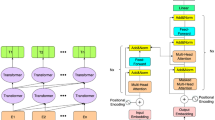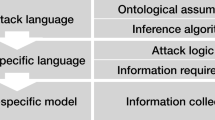Abstract
Existing studies on the detection of mobile malware have focused mainly on static analyses performed to examine the code-structure signature of viruses, rather than the dynamic behavioral aspects. By contrast, the unidentified behavior of new mobile viruses using the self-modification, polymorphic, and mutation techniques for variants have largely been ignored. The problem of precision regarding malware variant detection has become one of the key concerns in mobile security. Accordingly, the present study proposed a threat risk analysis model for mobile viruses, using a heuristic approach incorporating both malware behavior analysis and code analysis to generate a virus behavior ontology associated with the Protégé platform. The proposed model can not only explicitly identify an attack profile in accordance with structural signature of mobile viruses, but also overcome the uncertainty regarding the probability of an attack being successful. This model is able to achieve this by extending frequent episode rules to investigate the attack profile of a given malware, using specific event sequences associated with the sandbox technique for mobile applications (apps) and hosts. For probabilistic analysis, defense evaluation metrics for each node were used to simulate the results of an attack. The simulations focused specifically on the attack profile of a botnet to assess the threat risk. The validity of the proposed approach was demonstrated numerically by using two malware cyber-attack examples. Overall, the results presented in this paper prove that the proposed scheme offers an effective countermeasure, evaluated using a set of security metrics, for mitigating network threats by considering the interaction between the attack profiles and defense needs.
























Similar content being viewed by others
References
Jacob G, Debar H, Filiol E (2008) Behavioral detection of malware: from a survey towards an established taxonomy. J Comput Virol 4:251–266
Bayne J (2012) An overview of threat and risk assessment. SANS Institute. http://www.sans.org/reading_room/whitepapers/auditing/overview-threat-risk-assessment_76. Accessed 14 Jan 2010
Mitre Corporation (2011) Common vulnerabilities and exposures. http://www.cve.mitre.org. Accessed 8 Jan 2012
NIST (2012) NVD (national vulnerability database). http://nvd.nist.gov/. Accessed 21 Sep 2012
Sheyner O (2004) Scenario graphs and attack graphs. PhD thesis, Carnegie Mellon University
Schneier B (1999) Attack trees: modeling security threats. Dr. Dobbs’ Journal. Retrieved from http://www.counterpane.com/attacktrees-ddj-ft.html
Edge KS, Dalton II GC, Raines RA, Mills RF (2007) Using attack and protection trees to analyze threats and defenses to homeland security (MILCOM), pp 1–7
Roy A, Kim D, Trivedi KS (2010) Cyber security analysis using attack countermeasure trees. In CSIIRW’10, April 21–23
Clausing J (2009) Building an automated behavioral malware analysis environment using open source software. SANS Institute Reading Room
Truman Sandbox (2013). http://www.secureworks.com/cyber-threat-intelligence/tools/truman/. Accessed 19 Mar 2012
Stewart J (2006) Behavioural malware analysis using Sandnets. Comput Fraud Secur 2006(12):4–6
Willems C, Holz T, Freiling F (2007) Toward automated dynamic malware analysis using CWSandbox. IEEE Secur Priv 5(2):32–39
Blasing T, Batyuk L, Schmidt AD, Camtepe SA, Albayrak S (2010) An android application sandbox system for suspicious software detection. In 5th international conference of malicious and unwanted software (MALWARE)
Honeynet Project (2012) DroidBox. http://www.honeynet.org/gsoc/slot11
Marianne L (1987) The knowledge acquisition grid: a method for training knowledge engineers. Int J Man Mach Stud 26(2):245–255
Berners-Lee T (1998) Semantic web roadmap. W3C design issues
Noy NF, Hafner CD (1997) The state of the art in ontology design: a survey and comparative review. AI Mag 18(3):53–74
Noy NF, McGuinness DL (2001) Ontology development 101: a guide to creating your first ontology. Technical report KSL-01-05, Stanford Knowledge Systems Laboratory
Uschold M, Grueninger M (1996) Ontologies: principles, methods and applications. Knowl Eng Rev 11(2):93–155
Lee CS, Wang MH (2009) Ontology-based computational intelligent multi-agent and its application to CMMI assessment. Appl Intell 30(3):203–219
Simmonds A, Sandilands P, Ekert LV (2003) An ontology for network security attacks, RAID 2003, LCNS 2820. Springer, Heidelberg
Grit D, Lalana K, Tim F, Massimo P (2003) Security for DAML web services: annotation and matchmaking. In Proceedings of second international semantic web conference, September
Weavor N, Paxson V, Staniford S, Cunningham R (2003) A taxonomy of computer worms. UC Berkeley, ICSI, Silicon Defense, MIT Lincoln Laboratory
Dagon D, Gu G, Zou C, Grizzard J, Dwivedi S, Lee W, Lipton R (2006) A taxonomy of botnets. Georgia Institute of technology, University of Central Florida, Orlando, FL.
Lee CS, Jian ZW, Huang LK (2005) A fuzzy ontology and its application to news summarization. IEEE Trans Syst Man Cybern Part B 35(5):859–880
Huang HD, Chuang TY, Tsai YL, Lee CS (2010) Ontology-based intelligent system for malware behavioral analysis. In: 2010 IEEE international conference on fuzzy systems (FUZZ 2010), 1–6, July, 18–23, Barcelona, Spain
Huang HD, Lee CS, Kao HY, Tsai YL, Chang JG (2011) Malware behavioral analysis system: TWMAN, 2011 IEEE symposium on intelligent agent (IA), Paris, France, pp 1–8
Rauzy A (1993) New algorithms for fault tree analysis. Reliab Eng Syst Saf 40(3):203–211
Kordy B, Mauw S, Radomirovic S, Schweitzer P (2010) Foundations of attack–defense trees, LNCS 2010. Springer, Heidelberg. http://satoss.uni.lu/members/barbara/papers/adt.pdf. Accessed 11 March 2012
Wikipedia (2013) Mobile security. https://www.google.com.tw/#q=mobile+security+WIKI. Accessed 27 Nov 2013
Farahmand F, Navathe BS, Sharp PG, Enslow HP (2005) A management perspective on risk of security threats to information systems. Inf Technol Manag 6(2–3):203–225
Bandyopadhyay T, Jacob V, Raghunathan S (2010) Information security in networked supply chains: impact of network vulnerability and supply chain integration on incentives to invest. Inf Technol Manag 11(1):7–23
Wang P, Chao KM, Lo CC (2013) A novel threat and risk assessment mechanism for security controls in service management. In: IEEE international conference on e-business engineering (ICEBE 2013), pp 11–13
Isograph (2010) AttackTree+. http://www.isograph.com/software/attacktree/. Accessed 9 Apr 2011
International Organization for Standardization (2008) ISO/IEC 27005: 2008 information technology—security techniques—information security risk management
Desnos A, Androguard (2013). http://code.google.com/p/androguard/wiki/Usage. Accessed 21 May 2013
Mannila H, Toivonen H, Verkamo IA (1997) Discovery of frequent episodes in event sequences. Data Min Knowl Discov 1(3):259–289
Cincotti A, Cutello V, Pappalardo F (2003) An ant algorithm for the weighted minimum hitting set problem. In: 2003 IEEE swarm intelligence symposium (SIS), pp 24–26
Bulysheva L, Bulyshev A (2012) Segmentation modeling algorithm: a novel algorithm in data mining. Inf Technol Manag 13(4):263–271
Jacks T, Palvia P (2013) SMeasuring value dimensions of IT occupational culture: an exploratory analysis. Inf Technol Manag. doi:10.1007/s10799-013-0170-0
Stanford University (2002) Protégé. http://protege.stanford.edu. Accessed 19 Oct 2011
Symantec (2009) Zeus: king of the bots (PDF). https://www.google.com.tw/search?hl=zh-TW&rlz=1T4MXGB_zh-TWTW511TW512&q=King+of+the+Bots&oq=King+of+the+Bots. Accessed 27 Jan 2012
Stevens K, Jackson D (2010) Zeus banking Trojan report. http://www.secureworks.com/research/threats/Zeus/?threat=Zeus. Accessed 08 Oct 2011
Acknowledgments
This work was supported partly by National Science Council under the Grant Nos. 103-2627-E-168-001, 103-N-358-NSC-R-040 and NSC 102-2218-E-168-044.
Author information
Authors and Affiliations
Corresponding author
Rights and permissions
About this article
Cite this article
Wang, P., Chao, KM., Lo, CC. et al. Using ontologies to perform threat analysis and develop defensive strategies for mobile security. Inf Technol Manag 18, 1–25 (2017). https://doi.org/10.1007/s10799-014-0213-1
Published:
Issue Date:
DOI: https://doi.org/10.1007/s10799-014-0213-1




